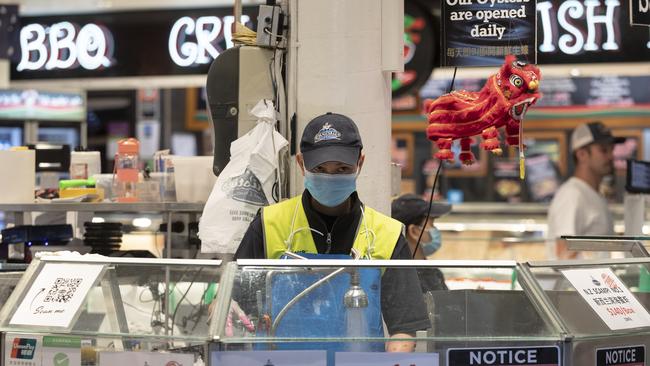Risk and recovery: the right mix will be crucial for corporate leaders
Corporate winners will be those who find the optimal balance between risk-mitigation and readiness for the eventual recovery.

The COVID-19 pandemic has created extraordinary challenges for all of us. Corporate leaders are being tested, with many of their business forecasts and plans being torn up overnight.
“Guidance withdrawal” has become the common ASX corporate headline in recent weeks.
Historically, business survival itself has been the goal for many corporates during financial crises, most typically where the crisis is structural and the impact is seen as enduring, as was the case with the global financial crisis in 2008-09.
But the current crisis is arguably different. It is event- driven, which means it could get much deeper in the near term — but it also brings the possibility that conclusion could be reached quickly (for example, through the delivery of effective treatments and other intervention measures), assisted by unprecedented fiscal stimulus and relief packages from governments and central banks.
In this context, tomorrow’s corporate “winners” are likely to be those whose leaders find the optimal balance between risk-mitigation measures aimed at ensuring business survival in the near term, and measures that position the corporate to capitalise on the eventual recovery phase, a phase that could begin unexpectedly.
Let’s examine this distinction in more detail.
Risk-mitigation measures are familiar to all of us and in many ways seem a natural response to any crisis. We are currently seeing Australian corporates execute them.
Corporates are firstly and rightly focusing on staff safety and morale. Personal anxiety among staff has been high and a key objective of many organisations has been to ensure that staff continue to feel safe and protected at work.
Organisations that have already built a culture of resilience and connectedness among staff will be advantaged.
In addition, corporates are naturally focusing on business continuity and productivity. Measures such as “split teams” and working from home have been quickly implemented, with more nimble organisations being advantaged.
Near-term liquidity and balance-sheet strength has also quickly become a critical focus area. In the ASX-listed space, we have seen a series of out-of-cycle announcements by corporates clarifying their liquidity position and financial stability. An inevitable round of capital raisings has also commenced, some pre-emptive (Cochlear, Next DC) and some arguably out of greater necessity (Flight Centre, Oil Search, oOh!media and Webjet).
In contrast, initiatives aimed at capitalising on a recovery while also familiar to us, are more typically seen in an expansionary economic phase. Consistent with this, there is less visibility at present of Australian corporates pursuing such initiatives. This, in part, is due to investor focus being more weighted to downside risk than to recovery. However, it is clear that these initiatives will be determinative of performance in the COVID-19 economic recovery phase, and some advantaged corporates are already implementing a range of them.
Leadership tested
First, some corporates are reviewing internal business plans, specifically with an eye to outperformance once a rebound in economic conditions occurs. This may result in the corporate deliberately resisting extensive short-term staff layoffs and implementing measures aimed at maintaining a resilient culture and strong morale.
BHP, for example, recently announced that it was preparing to recruit workers through the crisis for its copper and iron ore operations around Australia. Of note, the government’s $130bn JobKeeper wage subsidy initiative plays directly to this issue, aimed at providing affected businesses with a greater ability to withstand near-term business disruption until conditions ultimately improve.
Second, select corporates are actively working to ensure growth optionality is retained in their portfolio. Santos, for example, last week announced that it would be deferring a final investment decision on its Barossa project until oil sector conditions improved. But the company also noted as a positive that it was able to do this as it was fully in control of its capital expenditure profile (in other words, it has cost-effective growth optionality).
Third, forward-thinking corporates will be positioning to act on inorganic growth from M&A in the recovery phase, enabling value to be added though economic consolidation.
Many boards and management teams are doing the groundwork for this likelihood today, both by preparing to act on buy-side opportunities that may arise, and preparing from a takeover defence perspective.
A wave of consolidation in economic recovery phases has been a common and rational historical occurrence. Post the GFC, Australian M&A volumes rebounded significantly, increasing by nearly 80 per cent to $US156bn ($254bn) in 2010.
It is this balance between a risk and recovery outlook that investors will begin to focus on when they commence increasing their weighting to equities. Corporates that are thought to have best found the correct balance will be seen as potential sector “winners”. This in turn can potentially enhance the relative valuation rating of these companies, as a result reducing their cost of capital versus peers — ultimately making success a self-fulfilling prophecy for some.
Corporate leaders often cite the ability to lead in a crisis as a core competency. The current crisis is testing leadership and decision-making skills like never before, given the unknowns created by the pandemic.
Let’s trust our best corporate leaders are up to the challenge — finding the balance between short-term risk mitigation and positioning their organisations for the eventual recovery.
Alex Cartel is managing director, head of investment banking coverage at Deutsche Bank Australia. He is also president of the Takeovers Panel.



To join the conversation, please log in. Don't have an account? Register
Join the conversation, you are commenting as Logout